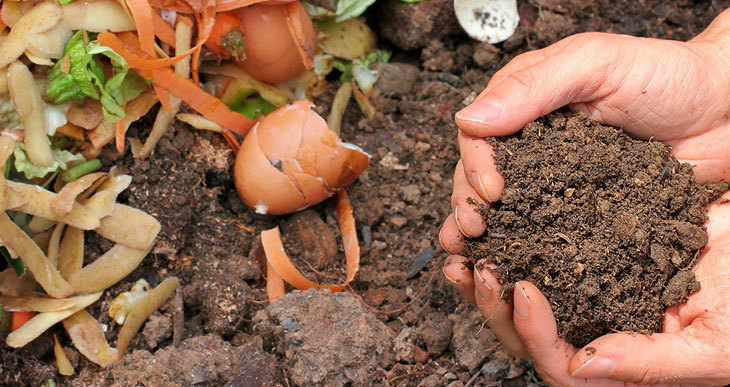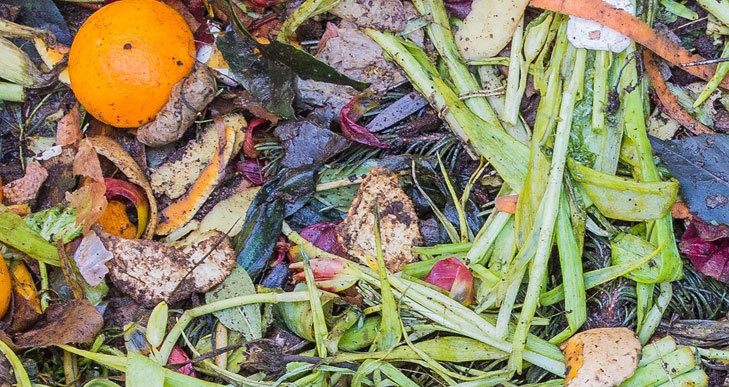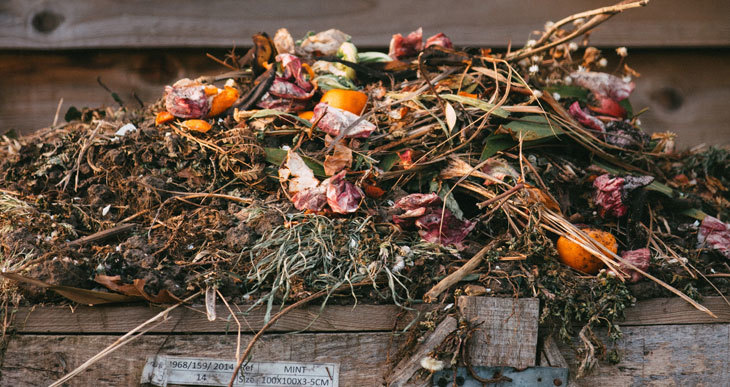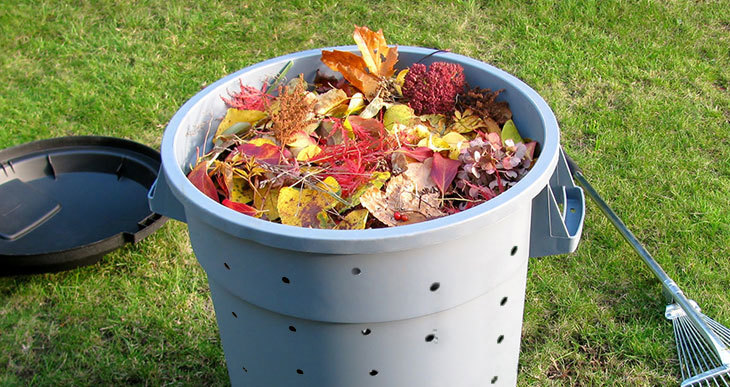Continuous Composter (What Is It & Which One is the Best?)
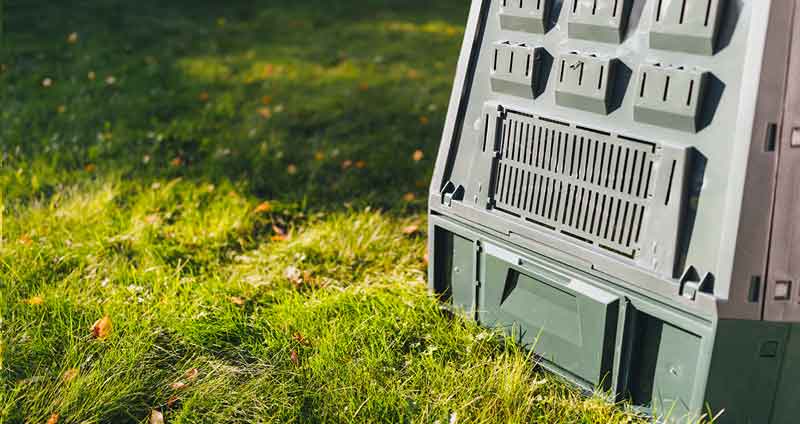
The demand for high-quality compost in our gardens is a constant challenge for many gardeners, especially those growing food crops.
One method of having a continuous supply of nutrient-rich compost is to use a continuous composter.
Continuous composting is a method that will give you a constant supply of compost. Still, it can take some time to produce mature compost, depending on how you approach it.
What Is Continuous Composting?
Continuous composting is when new material is added continually to the top of the composter. As the material decomposes, it moves lower down the container, and mature compost will settle at the bottom. This method requires less work and management and is best achieved using a compost bin.
Continuous composting aims to generate a constant supply of mature compost throughout the growing season.
Several different methods can achieve this composting goal, which we will touch on later.
The principle behind continuous composting is adding new compost material to the top of the compost pile to provide a constant supply of fresh plant material.
This method is in contrast to batch composting. When batch composting, the supply of new material is stopped, and the batch is allowed to mature as an entire unit. This method produces a complete harvest of mature compost ready for the garden.
Batch composting is typically used with compost tumblers or large piles. In contrast, continuous composting is generally used in compost piles or compost bins.
How Does A Continuous Composter Work?
A continuous composter is one of the easiest compost methods and requires the least work. Continuous composters are not the fastest composting method, but it is a simple, set-and-forget technique that many gardeners find convenient.
A continuous compost approach will have organic matter in the compost pile in various stages of decomposition. This is because it’s not necessary to turn the ingredients. Instead, they just get built up in layers.
The mature compost will always be at the bottom of the pile, and the fresh organic matter at the top.
The middle layers will contain organic matter in the process of decomposition.
As the organic matter decomposes in the upper layers, it works its way down to the bottom of the composter, where the mature compost will accumulate. Therefore, the gardener can retrieve mature compost from the bottom layer of the compost.
You’ll find that you can add a pretty good volume of material. This is because as the organic matter breaks down, it becomes more compact and reduces in size. As a result, compost matter can diminish by around 2/3rds of its original size.
Gaining access to the mature compost at the bottom is easy with a continuous composting bin. A hatch at the bottom provides access to the mature layer of compost.
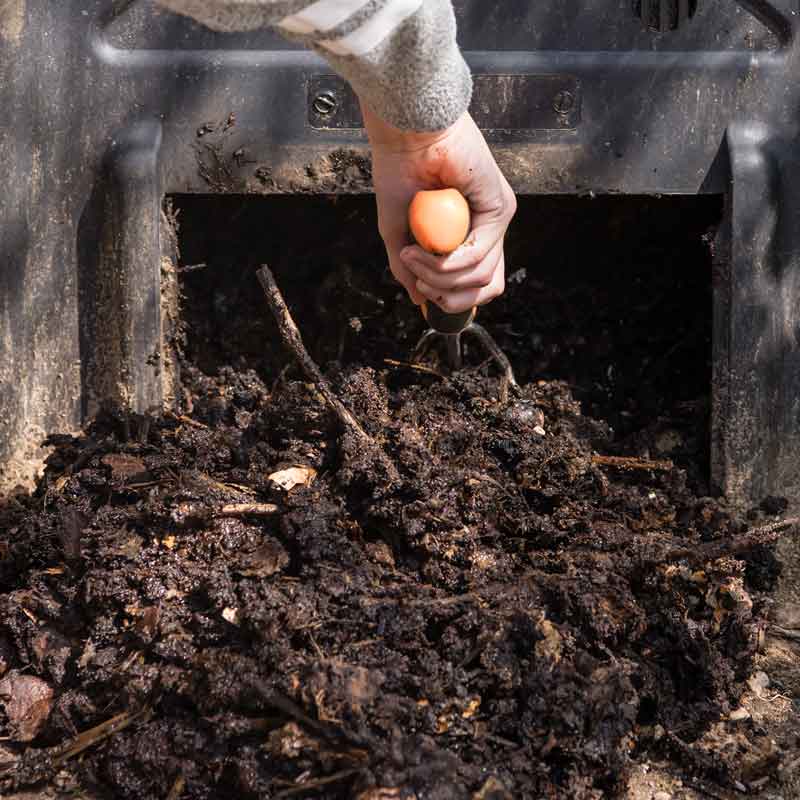
The continuous composting method is somewhat slower than other composting methods, primarily due to the lack of turning and the haphazard addition of material for composting.
Oxygen is an essential component of composting speed. The lack of turning and mixing diminishes the amount of oxygen circulating in a pile.
However, you can use a few techniques to increase the speed of decomposition and get slightly faster results.
Continuous Worm Composter
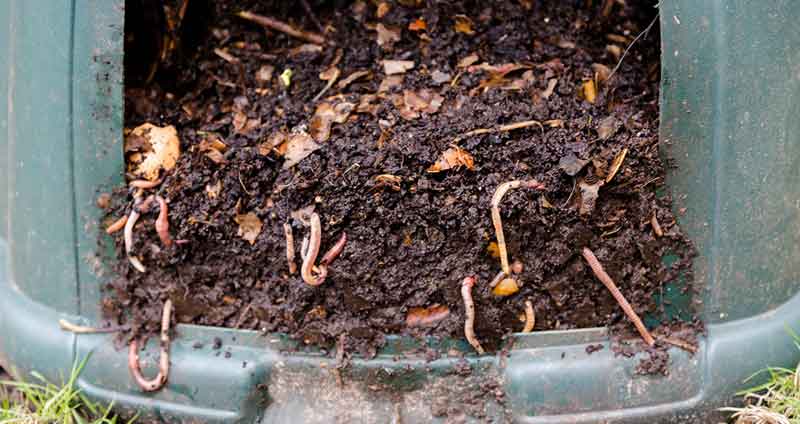
One of the methods to increase the decomposition rate in a continuous composter is to introduce worms to the mixture.
Worms such as red wigglers assist the decomposition process by chewing larger pieces of organic matter into smaller pieces. They also introduce enzymes into the mix and offer a means of aerating the compost by burrowing through it.
The worms will reproduce in the compost pile. They can be added to your garden with the finished compost to help improve the overall condition of the soil in your growing beds.
It’s a win-win solution!
You can buy red wigglers from worm farmers and ship them to your home address. For example, check out the deals at Uncle Jim’s Wormfarm.
Layer The Ingredients In The Continuous Composter
Layering the compost bin ingredients using the same ratios for hot composting is another method of speeding up the production of mature compost.
Layering alternate green and brown organic material will increase the temperature inside the composter and speed up the decomposition rate. This method essentially turns your continuous composter into a hot composter.
The recommended ratio for hot composting is 1/3rd greens to 2/3rds browns.
Remember: browns are dry materials like straw, sawdust, and dead leaves. Greens are wet materials like grass, vegetable peelings, or fresh yard trimmings.
This composting method requires more thought and planning when adding new material to the system.
Continuous Composting Systems
There are various ways to do continuous composting. While you can perform this method in a compost pile, it’s not ideal. A heap is open to the elements and doesn’t contain the ingredients well.
It may be easy to add new material to the pile, but accessing the mature compost at the bottom is difficult. And the compost can spread out, limiting the effectiveness of the process.
What’s The Best Continuous Composter?
The best system for continuous composting is by using a continuous composting bin.
The vertical structure of the bin keeps the compost contained and provides better separation of the organic matter in different stages of decomposition.
The best system is the one that meets your unique gardening and space requirements. The size of your garden and the amount of waste materials your household produces are the biggest factors determining your choice.
Remember that using a true continuous composting bin will take more time to produce compost, but it offers convenience and minimal management.
If this is your only method of composting, you should consider the size of the bin. Bigger is obviously better because of the waiting period before getting finished compost. If you have a large yard, you might prefer more than one bin.
Continuous Compost Bins
Continuous bins come in various sizes, giving a range of choices to suit your space requirements.
I recommend choosing either a medium or a large composting bin to ensure you have enough capacity to add new material without constantly running out of space.
For example, this 110-gallon or 420-liter compost bin makes a decent medium-sized continuous composting system (Amazon link). It has vents to promote airflow and is made from recycled BPA-free plastic. It also has two access doors at the bottom to harvest the finished product.
Keep in mind that the volume affects the speed of decomposition. This is because a larger mass has a lower surface volume through which to lose heat. This is why bigger capacity bins retain heat much better, speeding up decomposition.
For a larger capacity bin, you could try the SQUEEZE master XXL Large Compost Bin, which has a capacity of 190-gallons or 720-liters. This large continuous compost bin has several access panels at the bottom to extract the mature compost. (Amazon)
Continuous Use Compost Tumbler
Continuous composting can be achieved using other methods more consistent with batch composting, such as a tumbler.
A continuous method can only be achieved with tumblers designed with separate compartments.
What Is A Continuous Use Compost Tumbler?
These tumblers are designed with multiple chambers. When you have filled one chamber to capacity, you stop adding material to that chamber. When you have new waste to add, you put it in the second chamber.
The material in the first chamber will decompose and become mature compost while you add new material to the second bin.
By the time the second compartment is full, the compost in the first chamber should be ready to be harvested.
The emptied compartment will then become the compartment to which you add new material, and so on, creating a continuous cycle of finished compost.
The Miracle Grow tumbler is a perfect example of this kind of system (Amazon link).
Continuous Composter Vs. Tumbler
If you want compost that requires minimal effort, continuous composting is the right choice.
But should you use a compost bin or a compost tumbler for this method?
Personally, I recommend you use the compost bin method, which truly gives the advantages of the continuous compost method.
The pros and cons are as follows:
- Compost bins can be added to all the time. Compost tumblers reach capacity quickly.
- Compost bins do not require the compost to be turned. Compost tumblers need turning regularly.
- Compost can be removed from the bin on an as-needed basis. In contrast, the compost must be removed entirely from the tumbler and stored separately to free up the chamber.
- Compost bins can be used with worms to enhance the process. Worms cannot be used in compost tumblers.
Conclusion
There are many ways to remove the skin from the proverbial cat when using the continuous compost method, but the best method to use is a compost bin.
Compost bins have the capacity required for this type of composting and do not require turning. Therefore, material can be added to them continually.
After all, that’s why they call them “continuous composters”!
Whatever you choose, your garden will thank you by rewarding you with bountiful growth!


